Home Build Aircraft on:
[Wikipedia]
[Google]
[Amazon]
 Homebuilt aircraft, also known as amateur-built aircraft or kit planes, are constructed by persons for whom this is not a professional activity. These aircraft may be constructed from "scratch", from plans, or from assembly kits.Armstrong, Kenneth: ''Choosing Your Homebuilt - the one you will finish and fly! Second Edition'', pp. 39–52. Butterfield Press, 1993. Peter M Bowers: ''Guide to Homebuilts - Ninth Edition''. TAB Books, Blue Ridge Summit PA, 1984.
Homebuilt aircraft, also known as amateur-built aircraft or kit planes, are constructed by persons for whom this is not a professional activity. These aircraft may be constructed from "scratch", from plans, or from assembly kits.Armstrong, Kenneth: ''Choosing Your Homebuilt - the one you will finish and fly! Second Edition'', pp. 39–52. Butterfield Press, 1993. Peter M Bowers: ''Guide to Homebuilts - Ninth Edition''. TAB Books, Blue Ridge Summit PA, 1984.
 Homebuilt aircraft gained in popularity in the U.S. in 1924 with the start of the
Homebuilt aircraft gained in popularity in the U.S. in 1924 with the start of the
 Until the late 1950s, builders had mainly kept to wood-and-cloth and steel tube-and-cloth design. Without the regulatory restrictions faced by production aircraft manufacturers, homebuilders introduced innovative designs and construction techniques. Burt Rutan introduced the canard (aeronautics), canard design to the homebuilding world and pioneered the use of composite construction. Metal construction in kitplanes was taken to a new level by Richard VanGrunsven in his Van's Aircraft, RV series. As the sophistication of the kits improved, components such as autopilots and more advanced radio navigation, navigation instruments became common.
Litigation during the 1970s and 1980s caused stagnation in the small aircraft market, forcing the surviving companies to retain older, proven designs. In recent years, the less restrictive regulations for homebuilts allowed a number of manufacturers to develop new and innovative designs; many can outperform certified production aircraft in their class.
An example of high-end homebuilt design is Lancair, which has developed a number of high-performance kits. The most powerful is the Lancair Propjet, a four-place kit with cabin pressurization and a turboprop engine, cruising at and 370 knots (425 mph, 685 km/h). Although aircraft such as this are considered "home-built" for legal reasons, they are typically built in the factory with the assistance of the buyer. This allows the company which sells the kit to avoid the long and expensive process of certification, because they remain owner-built according to the regulations. One of the terms applied to this concept is commonly referred to as "The 51% Rule", which requires that builders perform the majority of the fabrication and assembly to be issued a Certificate of Airworthiness as an Amateur Built aircraft.
Until the late 1950s, builders had mainly kept to wood-and-cloth and steel tube-and-cloth design. Without the regulatory restrictions faced by production aircraft manufacturers, homebuilders introduced innovative designs and construction techniques. Burt Rutan introduced the canard (aeronautics), canard design to the homebuilding world and pioneered the use of composite construction. Metal construction in kitplanes was taken to a new level by Richard VanGrunsven in his Van's Aircraft, RV series. As the sophistication of the kits improved, components such as autopilots and more advanced radio navigation, navigation instruments became common.
Litigation during the 1970s and 1980s caused stagnation in the small aircraft market, forcing the surviving companies to retain older, proven designs. In recent years, the less restrictive regulations for homebuilts allowed a number of manufacturers to develop new and innovative designs; many can outperform certified production aircraft in their class.
An example of high-end homebuilt design is Lancair, which has developed a number of high-performance kits. The most powerful is the Lancair Propjet, a four-place kit with cabin pressurization and a turboprop engine, cruising at and 370 knots (425 mph, 685 km/h). Although aircraft such as this are considered "home-built" for legal reasons, they are typically built in the factory with the assistance of the buyer. This allows the company which sells the kit to avoid the long and expensive process of certification, because they remain owner-built according to the regulations. One of the terms applied to this concept is commonly referred to as "The 51% Rule", which requires that builders perform the majority of the fabrication and assembly to be issued a Certificate of Airworthiness as an Amateur Built aircraft.
 A small number of jet kitplanes have been built since the 1970s, including the tiny Bede Aircraft Bede BD-5#BD-5J, BD-5J.
A small number of jet kitplanes have been built since the 1970s, including the tiny Bede Aircraft Bede BD-5#BD-5J, BD-5J.

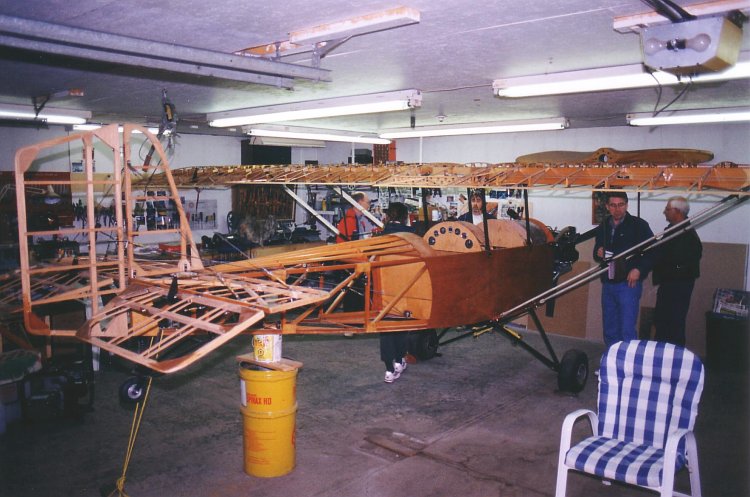 This is the oldest construction, seen in the first aircraft and hence the best known. For that reason, amateur-built aircraft associations will have more specialists for this type of craft than other kinds.
The most commonly used woods are Picea sitchensis, Sitka spruce and Douglas fir, which offer excellent strength-to-weight ratios. Wooden structural members are joined with adhesive, usually epoxy. Unlike the wood construction techniques used in other applications, virtually all wooden joints in aircraft are simple butt joints, with
This is the oldest construction, seen in the first aircraft and hence the best known. For that reason, amateur-built aircraft associations will have more specialists for this type of craft than other kinds.
The most commonly used woods are Picea sitchensis, Sitka spruce and Douglas fir, which offer excellent strength-to-weight ratios. Wooden structural members are joined with adhesive, usually epoxy. Unlike the wood construction techniques used in other applications, virtually all wooden joints in aircraft are simple butt joints, with
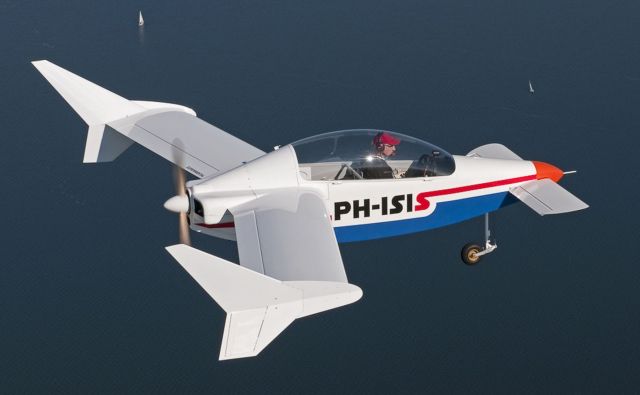

 Planes built from metal use similar techniques to more conventional factory-built aircraft. They can be more challenging to build, requiring metal-cutting, metal-shaping, and riveting if building from plans. "Quick-build" kits are available which have the cutting, shaping and hole-drilling mostly done, requiring only finishing and assembly. Such kits are also available for the other types of aircraft construction, especially composite.
There are three main types of metal construction: sheet aluminium, tube aluminium, and welded steel tube. The tube structures are covered in aircraft fabric, much like wooden aircraft.
Examples of metal-based amateur aircraft include:
* The Murphy Moose, Murphy Rebel, Rebel, Murphy SR2500 Super Rebel, Super Rebel and Murphy Maverick, Maverick, produced by Murphy Aircraft
* The Vans RV-4, Van's Aircraft RV-8, RV-8, Vans RV-10, RV-10 and other models produced by Van's Aircraft, are the most popular metal homebuilt aircraft
* Chris Heintz's AMD Zodiac, Zenith CH601 Zodiac and Zenith STOL CH701 family of two-seat kit planes
* The ARV Super2 has conventional wings, fuselage & empanage, but the cockpit is a monococque of "Supral" Superplasticity, superplastic alloy
Planes built from metal use similar techniques to more conventional factory-built aircraft. They can be more challenging to build, requiring metal-cutting, metal-shaping, and riveting if building from plans. "Quick-build" kits are available which have the cutting, shaping and hole-drilling mostly done, requiring only finishing and assembly. Such kits are also available for the other types of aircraft construction, especially composite.
There are three main types of metal construction: sheet aluminium, tube aluminium, and welded steel tube. The tube structures are covered in aircraft fabric, much like wooden aircraft.
Examples of metal-based amateur aircraft include:
* The Murphy Moose, Murphy Rebel, Rebel, Murphy SR2500 Super Rebel, Super Rebel and Murphy Maverick, Maverick, produced by Murphy Aircraft
* The Vans RV-4, Van's Aircraft RV-8, RV-8, Vans RV-10, RV-10 and other models produced by Van's Aircraft, are the most popular metal homebuilt aircraft
* Chris Heintz's AMD Zodiac, Zenith CH601 Zodiac and Zenith STOL CH701 family of two-seat kit planes
* The ARV Super2 has conventional wings, fuselage & empanage, but the cockpit is a monococque of "Supral" Superplasticity, superplastic alloy
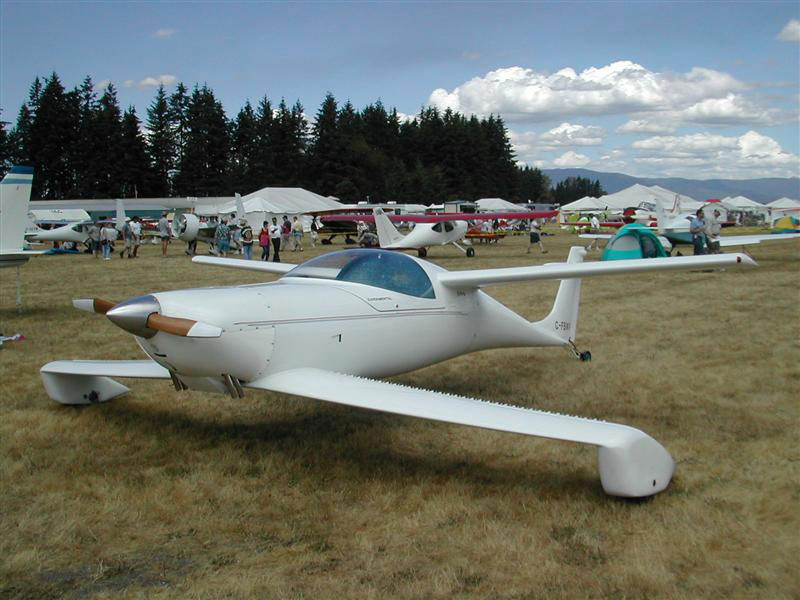
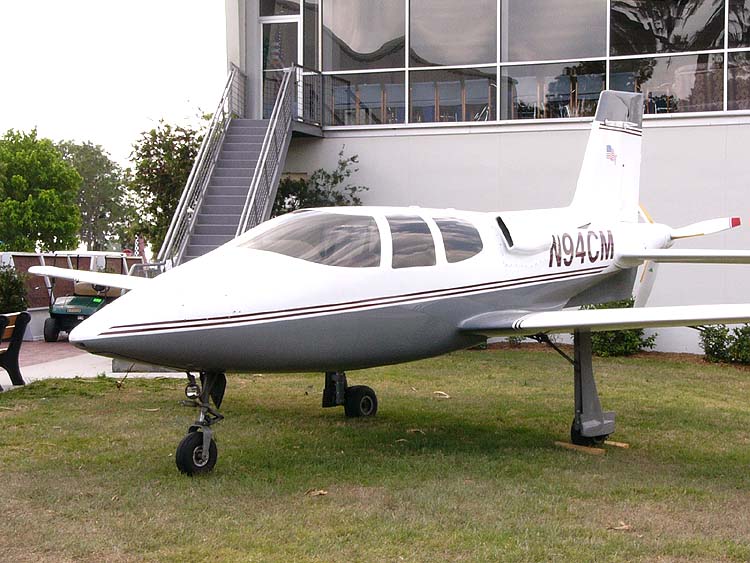
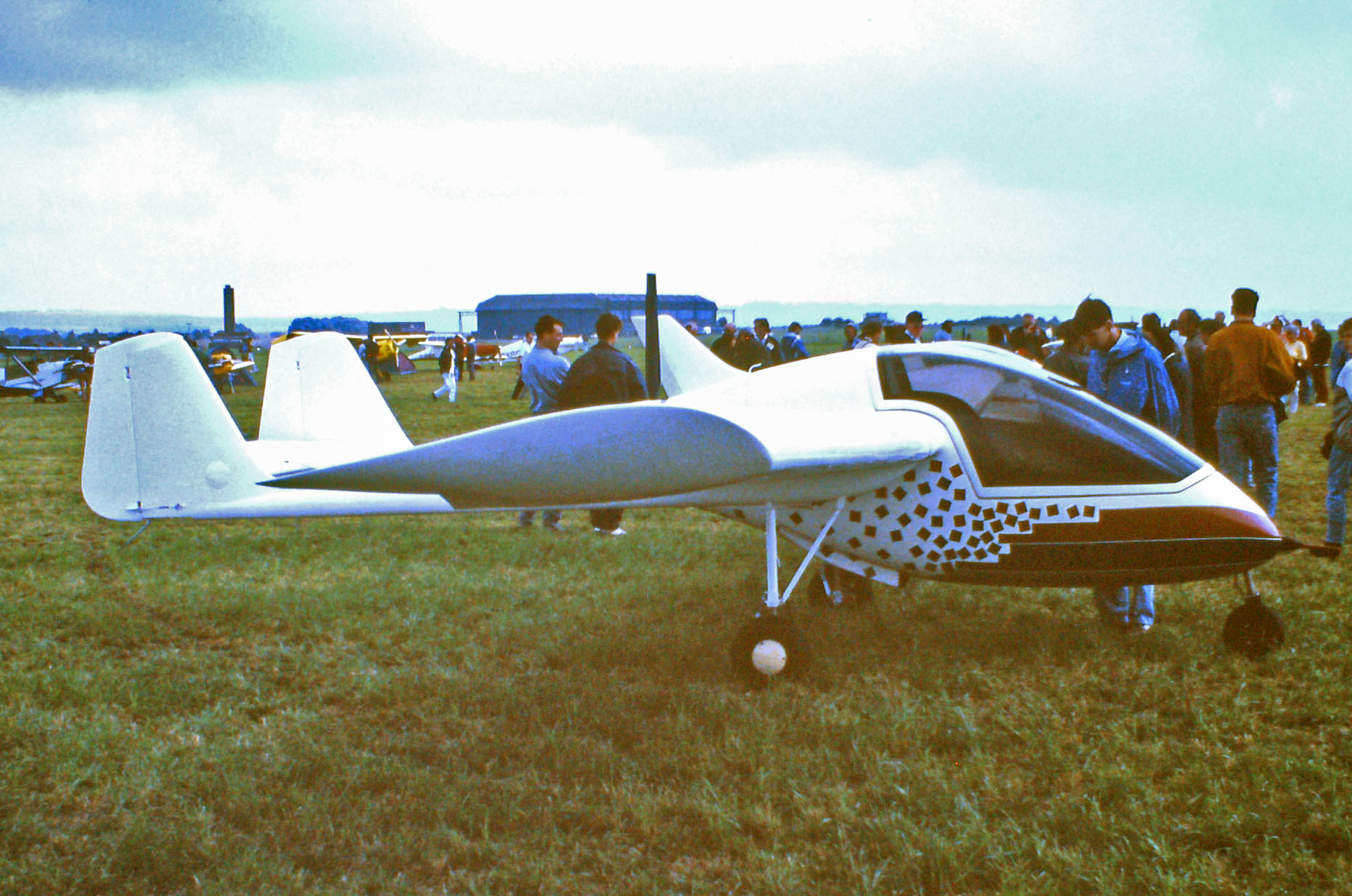 Composite material structures are made of cloth with a high tensile strength (usually fiberglass or carbon fiber, or occasionally Kevlar) combined with a structural plastic (usually epoxy, although vinylester is used in some aircraft). The fabric is saturated with the structural plastic in a liquid form; when the plastic cures and hardens, the part will hold its shape while possessing the strength characteristics of the fabric.
The two primary types of composite planes are moulded composite, where major structures like wing skins and fuselage halves are prepared and cured in moulds, and mouldless, where shapes are carved out of foam and then covered with fiberglass or carbon fiber.
The advantages of this type of construction include smooth surfaces (without the drag of rivets), the ability to do compound curves, and the ability to place fiberglass or carbon fiber in optimal positions, orientations, and quantities. Drawbacks include the need to work with chemical products as well as low strength in directions perpendicular to fiber. Composites provide superb strength to their weight. Material stiffness dependent upon direction (as opposed to equal in all directions, as with metals) allows for advanced "elastic tailoring" of composite parts.
Examples of amateur craft made of composite materials include:
* Canard (aeronautics), Canard designs such as the VariEze and Long EZ designed by Burt Rutan
* The pusher propeller Cirrus VK-30 designed by Jeff Viken and the Klapmeier brothers
* The Europa XS family of British two-place monoplanes designed by Ivan Shaw
* The Glasair I, Glasair II, II and Glasair III, III series of high-performance homebuilts designed by Tom Hamilton
Composite material structures are made of cloth with a high tensile strength (usually fiberglass or carbon fiber, or occasionally Kevlar) combined with a structural plastic (usually epoxy, although vinylester is used in some aircraft). The fabric is saturated with the structural plastic in a liquid form; when the plastic cures and hardens, the part will hold its shape while possessing the strength characteristics of the fabric.
The two primary types of composite planes are moulded composite, where major structures like wing skins and fuselage halves are prepared and cured in moulds, and mouldless, where shapes are carved out of foam and then covered with fiberglass or carbon fiber.
The advantages of this type of construction include smooth surfaces (without the drag of rivets), the ability to do compound curves, and the ability to place fiberglass or carbon fiber in optimal positions, orientations, and quantities. Drawbacks include the need to work with chemical products as well as low strength in directions perpendicular to fiber. Composites provide superb strength to their weight. Material stiffness dependent upon direction (as opposed to equal in all directions, as with metals) allows for advanced "elastic tailoring" of composite parts.
Examples of amateur craft made of composite materials include:
* Canard (aeronautics), Canard designs such as the VariEze and Long EZ designed by Burt Rutan
* The pusher propeller Cirrus VK-30 designed by Jeff Viken and the Klapmeier brothers
* The Europa XS family of British two-place monoplanes designed by Ivan Shaw
* The Glasair I, Glasair II, II and Glasair III, III series of high-performance homebuilts designed by Tom Hamilton
Experimental Aircraft Association
(EAA)
Light Aircraft Association
the representative body in the United Kingdom for amateur aircraft.
FAA Advisory Circular 20-27G: Certification and Operation of Amateur-Built Aircraft
Homebuilt aircraft,
 Homebuilt aircraft, also known as amateur-built aircraft or kit planes, are constructed by persons for whom this is not a professional activity. These aircraft may be constructed from "scratch", from plans, or from assembly kits.Armstrong, Kenneth: ''Choosing Your Homebuilt - the one you will finish and fly! Second Edition'', pp. 39–52. Butterfield Press, 1993. Peter M Bowers: ''Guide to Homebuilts - Ninth Edition''. TAB Books, Blue Ridge Summit PA, 1984.
Homebuilt aircraft, also known as amateur-built aircraft or kit planes, are constructed by persons for whom this is not a professional activity. These aircraft may be constructed from "scratch", from plans, or from assembly kits.Armstrong, Kenneth: ''Choosing Your Homebuilt - the one you will finish and fly! Second Edition'', pp. 39–52. Butterfield Press, 1993. Peter M Bowers: ''Guide to Homebuilts - Ninth Edition''. TAB Books, Blue Ridge Summit PA, 1984.
Overview
In the United States, Brazil,Australia
Australia, officially the Commonwealth of Australia, is a Sovereign state, sovereign country comprising the mainland of the Australia (continent), Australian continent, the island of Tasmania, and numerous List of islands of Australia, sma ...
, New Zealand and South Africa, homebuilt aircraft may be licensed Experimental under FAA or similar local regulations. With some limitations, the builder(s) of the aircraft must have done it for their own education and recreation rather than for profit. In the U.S., the primary builder can also apply for a repairman's certificate for that airframe. The repairman's certificate allows the holder to perform and sign off on most of the maintenance, repairs, and inspections themselves.
Alberto Santos-Dumont was the first to offer for free construction plans, publishing drawings of his Demoiselle in the June 1910 edition of Popular Mechanics. The first aircraft to be offered for sale as plans, rather than a completed airframe, was the Baby Ace
The Ace ''Baby Ace,'' a single-seat, single-engine, parasol wing, fixed-gear light airplane, was marketed as a homebuilt aircraft when its plans were first offered for sale in 1929 — one of the first homebuilt aircraft plans available in ...
in the late 1920s.
 Homebuilt aircraft gained in popularity in the U.S. in 1924 with the start of the
Homebuilt aircraft gained in popularity in the U.S. in 1924 with the start of the National Air Races
The National Air Races (also known as Pulitzer Trophy Races) are a series of pylon and cross-country races that have taken place in the United States since 1920. The science of aviation, and the speed and reliability of aircraft and engines grew ...
, held in Dayton, Ohio. These races required aircraft with useful loads of and engines of 80 cubic inches or less and as a consequence of the class limitations most were amateur-built. The years after Charles Lindbergh's transatlantic flight brought a peak of interest between 1929 and 1933. During this period many aircraft designers, builders and pilots were self-taught and the high accident rate brought public condemnation and increasing regulation to amateur building. The resulting federal standards on design, engineering, stress analysis, use of aircraft-quality hardware and testing of aircraft brought an end to amateur building except in some specialized areas, such as racing. In 1946 Goodyear restarted the National Air Races, including a class for aircraft powered by 200 cubic inch and smaller engines. The midget racer class spread nationally in the U.S. and this led to calls for acceptable standards to allow recreational use of amateur-built aircraft. By the mid-1950s both the U.S. and Canada once again allowed amateur-built aircraft to specified standards and limitations.
Homebuilt aircraft are generally small, one to four-seat sportsplanes which employ simple methods of construction. Fabric-covered wood or metal frames and plywood
Plywood is a material manufactured from thin layers or "plies" of wood veneer that are glued together with adjacent layers having their wood grain rotated up to 90 degrees to one another. It is an engineered wood from the family of manufactured ...
are common in the aircraft structure, but increasingly, fiberglass and other composites as well as full aluminum construction techniques are being used, techniques first pioneered by Hugo Junkers as far back as the late World War I era. Engines are most often the same as, or similar to, the engines used in certified aircraft (such as Lycoming, Continental, Rotax, and Jabiru). A minority of homebuilts use converted automobile engines, with Volkswagen air-cooled flat-4s, Subaru-based liquid-cooled engines, Mazda Wankel engine, Wankel and Chevrolet Turbo-Air 6 engine, Chevrolet Corvair six-cylinder engines being most common. The use of automotive engines helps to reduce costs, but many builders prefer dedicated aircraft engines, which are perceived to have better performance and reliability. Other engines that have been used include chainsaw and motorcycle engines.
A combination of cost and litigation, especially in the mid-1980s era, discouraged general aviation manufacturers from introducing new designs and led to homebuilts outselling factory built aircraft by five to one.
History
The history of amateur-built aircraft can be traced to the beginning of aviation. Even if the Wright brothers, Clément Ader, and their successors had commercial aviation, commercial objectives in mind, the first aircraft were constructed by passionate enthusiasts whose goal was to fly.Early years
Aviation took a leap forward with the industrialization that accompanied World War I. In the post-war period, manufacturers needed to find new markets and introduced models designed for tourism. However, these machines were affordable only by the very rich. Many U.S. aircraft designed and registered in the 1920s onward were considered "experimental" by the (then) CAA, the same registration under which modern homebuilts are issued Special Airworthiness Certificates. Many of these were prototypes, but designs such as Bernard Pietenpol's first 1923 design were some of the first homebuilt aircraft. In 1928, Henri Mignet published plans for his Mignet Pou-du-Ciel, HM-8 ''Pou-du-Ciel'', as did Pietenpol for his Pietenpol Air Camper, Air Camper. Pietenpol later constructed a factory, and in 1933 began creating and selling partially constructed aircraft kits. In 1936, an association of amateur aviation enthusiasts was created in France. Many types of amateur aircraft began to make an appearance, and in 1938 legislation was amended to provide for a ''Certificat de navigabilité restreint d'aéronef'' (''CNRA'', "Operating certificate, restricted operating certificate for aircraft"). 1946 saw the birth of the Ultralight Aircraft Association which in 1952 became the Popular Flying Association in the United Kingdom, followed in 1953 by the Experimental Aircraft Association (EAA) in the United States and the Sport Aircraft Association inAustralia
Australia, officially the Commonwealth of Australia, is a Sovereign state, sovereign country comprising the mainland of the Australia (continent), Australian continent, the island of Tasmania, and numerous List of islands of Australia, sma ...
.
The term "homebuilding" became popular in the mid-1950s when EAA founder Paul Poberezny wrote a series of articles for the magazine ''Mechanix Illustrated'' where he explained how a person could buy a set of plans and build their own aircraft at home. In 1955, Poberezny co-founded, with Robert D. Blacker, EAA's first youth outreach program, Project Schoolflight, which brought "homebuilding" into high school industrial arts classes throughout the US. Poberezny's Mechanix Illustrated articles gained worldwide acclaim and the concept of aircraft homebuilding took off.
Technology and innovation
 A small number of jet kitplanes have been built since the 1970s, including the tiny Bede Aircraft Bede BD-5#BD-5J, BD-5J.
A small number of jet kitplanes have been built since the 1970s, including the tiny Bede Aircraft Bede BD-5#BD-5J, BD-5J.
Future trends
Van's Aircraft and Aircraft Kit Industry Association (AKIA) President Dick VanGrunsven was asked about the future of the kit aircraft industry in a wide-ranging interview in KitPlanes magazine in December 2012:Building materials
Homebuilt aircraft can be constructed out of any material that is light and strong enough for flight. Several common construction methods are detailed below.Wood and fabric
plywood
Plywood is a material manufactured from thin layers or "plies" of wood veneer that are glued together with adjacent layers having their wood grain rotated up to 90 degrees to one another. It is an engineered wood from the family of manufactured ...
gussets. Joints are designed to be stronger than the members. After the structure has been completed, the aircraft is covered in aircraft fabric (usually aircraft-grade polyester). The advantage of this type of construction is that it does not require complex tools and equipment, but commonplace items such as saw, planer, file, sandpaper, and clamps.
Examples of amateur-built wood and fabric designs include:
* The classic Pietenpol Air Camper, a homebuilt that has been built since the 1920s
* The Bowers Fly Baby, a low-wing monoplane which has been popular since the 1960s
* The Ison miniMAX
Wood/composite mixture
A recent trend is toward wood-composite aircraft. The basic load carrying material is still wood, but it is combined with foam (for instance to increase buckling resistance of load carrying plywood skins) and other synthetic materials like glass- and carbon fibre (to locally increase the modulus of load carrying structures like spar caps, etc.). Examples of wood-composite designs include: *Junqua Ibis, Ibis experimental aircraft project, designed by Roger Junqua *Rand Robinson KR-1, KR series of homebuilts designed by Ken Rand *PIK-26 designed by Kai Mellen
Metal

Composite


 Composite material structures are made of cloth with a high tensile strength (usually fiberglass or carbon fiber, or occasionally Kevlar) combined with a structural plastic (usually epoxy, although vinylester is used in some aircraft). The fabric is saturated with the structural plastic in a liquid form; when the plastic cures and hardens, the part will hold its shape while possessing the strength characteristics of the fabric.
The two primary types of composite planes are moulded composite, where major structures like wing skins and fuselage halves are prepared and cured in moulds, and mouldless, where shapes are carved out of foam and then covered with fiberglass or carbon fiber.
The advantages of this type of construction include smooth surfaces (without the drag of rivets), the ability to do compound curves, and the ability to place fiberglass or carbon fiber in optimal positions, orientations, and quantities. Drawbacks include the need to work with chemical products as well as low strength in directions perpendicular to fiber. Composites provide superb strength to their weight. Material stiffness dependent upon direction (as opposed to equal in all directions, as with metals) allows for advanced "elastic tailoring" of composite parts.
Examples of amateur craft made of composite materials include:
* Canard (aeronautics), Canard designs such as the VariEze and Long EZ designed by Burt Rutan
* The pusher propeller Cirrus VK-30 designed by Jeff Viken and the Klapmeier brothers
* The Europa XS family of British two-place monoplanes designed by Ivan Shaw
* The Glasair I, Glasair II, II and Glasair III, III series of high-performance homebuilts designed by Tom Hamilton
Composite material structures are made of cloth with a high tensile strength (usually fiberglass or carbon fiber, or occasionally Kevlar) combined with a structural plastic (usually epoxy, although vinylester is used in some aircraft). The fabric is saturated with the structural plastic in a liquid form; when the plastic cures and hardens, the part will hold its shape while possessing the strength characteristics of the fabric.
The two primary types of composite planes are moulded composite, where major structures like wing skins and fuselage halves are prepared and cured in moulds, and mouldless, where shapes are carved out of foam and then covered with fiberglass or carbon fiber.
The advantages of this type of construction include smooth surfaces (without the drag of rivets), the ability to do compound curves, and the ability to place fiberglass or carbon fiber in optimal positions, orientations, and quantities. Drawbacks include the need to work with chemical products as well as low strength in directions perpendicular to fiber. Composites provide superb strength to their weight. Material stiffness dependent upon direction (as opposed to equal in all directions, as with metals) allows for advanced "elastic tailoring" of composite parts.
Examples of amateur craft made of composite materials include:
* Canard (aeronautics), Canard designs such as the VariEze and Long EZ designed by Burt Rutan
* The pusher propeller Cirrus VK-30 designed by Jeff Viken and the Klapmeier brothers
* The Europa XS family of British two-place monoplanes designed by Ivan Shaw
* The Glasair I, Glasair II, II and Glasair III, III series of high-performance homebuilts designed by Tom Hamilton
Safety
The safety record of homebuilts is not as good as Type certificate, certified general aviation aircraft. In the United States, in 2003, amateur-built aircraft experienced a rate of 21.6 accidents per 100,000 flight hours; the overall general aviation accident rate for that year was 6.75 per 100,000 flight hours. The accident rate for homebuilt aircraft in the U.S. has long been a concern to the Federal Aviation Administration. At Sun 'n Fun 2010, FAA Administrator Randy Babbitt said that homebuilts "account for 10 percent of the GA fleet, but 27 percent of accidents. It's not the builders (getting into accidents), but the second owners. We need better transition training." In the US, Flight training, flight instruction, including primary flight training, can be received in the owner's homebuilt aircraft from any instructor willing to provide such training. A study released in 2012 by the U.S. National Transportation Safety Board concluded that homebuilt aircraft in the U.S. have an accident rate 3–4 times higher than the rest of the general aviation fleet. Almost 10% of homebuilt accidents occurred on the first flight and 9% of accidents occurred in aircraft that were sold were on the new owner's first flight. The study also identified that powerplant failures and loss of control in-flight accidents were much higher than the same rates for certified aircraft.Wanttaja, Ron: ''Amateur-Built Aircraft Safety Study'', Kitplanes, Volume 29, Number 12, December 2012, pp. 36–41. Belvoir Publications. Most nations' aviation regulations require amateur-built aircraft to be physically marked as such (for example in the U.K. "Occupant Warning – This aircraft ... is amateur built." must be displayed), and extra flight testing is usually required before passengers (who are not aviator, pilots themselves) can be carried.Culture
The largest airshow in the world is the Experimental Aircraft Association's annual EAA AirVenture Oshkosh airshow in Oshkosh, Wisconsin, which takes place in late July and early August. Other annual events are the Sun N' Fun Fly-In, which occurs in the early spring in Lakeland, Florida, and the Northwest EAA Fly-In in Arlington, Washington. These events are called a fly-in as many people fly their homebuilts and other aircraft into the airport hosting the show, often camping there for the duration. Both events last a week. Takeoffs and landings at these shows number in the thousands.See also
*Aircraft design process *Ultralight *Special Airworthiness Certificate *Kit carReferences
{{ReflistExternal links
Experimental Aircraft Association
(EAA)
Light Aircraft Association
the representative body in the United Kingdom for amateur aircraft.
FAA Advisory Circular 20-27G: Certification and Operation of Amateur-Built Aircraft
Homebuilt aircraft,